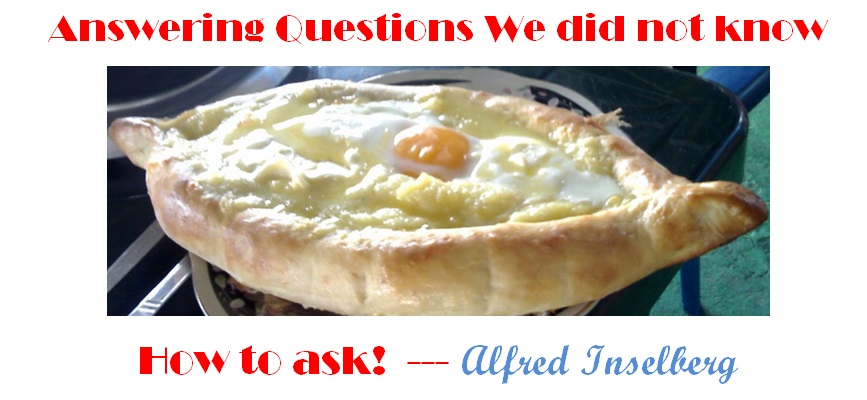


Visualization Analysis and Design
SUNDAY, NOVEMBER 9
8:30 - 12:10
Location: FORUM G,H,I,J
Tamara Munzner
This introductory tutorial provides a unified approach encompassing information visualization techniques for tables and networks, scientific visualization techniques for sampled spatial data, and visual analytics techniques for interweaving data transformation and analysis with interactive visual exploration. It focuses on abstractions and design choices rather than algorithms. No previous experience is assumed in visualization, programming, mathematics, computer graphics, human–computer interaction, or graphic design.
Opening the Black Box of Interaction in Visualization
SUNDAY, NOVEMBER 9
14:00-17:55
Location: FORUM A,B,C
Hans-Joerg Schulz, Tatiana von Landesberger, Dominikus Baur, Christian Tominski
Interaction is a key ingredient of modern visualization and visual analysis systems. Yet, so far interaction is perceived from either of three different angles: interaction activities (e.g., visualization tasks/events), interaction architectures (e.g., model-view-controller), or interaction metaphors (e.g., direct manipulation). This tutorial for beginning audiences aims to bring these three perspectives on interaction together by detailing the state-of-the-art for each and providing a comprehensive view on interaction.
Visualization and Analysis with Python
SUNDAY, NOVEMBER 9
14:00-17:55
Location: SCENE D,E,F
Jonathan Woodring, Julien Jomier, Joseph Cottam, Peter Wang
Python is a powerful environment due to the wide variety of libraries developed for it. One of the areas where Python excels at is visualization and analysis of data. This tutorial will cover the visualization capabilities of several interactive tools, analysis, simulation, & web environments (e.g., iPython, VTK, pandas, yt). This tutorial is intended for intermediate level participants that have a basic understanding of Python. Beginner participants are welcome, but Python fundamentals will not be covered in this tutorial.
"Where Do I Start?" Practical Methods for the Design Studies in Information Visualization and Visual Analysis
SUNDAY, NOVEMBER 9
14:00-17:55
Location: FORUM G,H,I,J
Laura McNamara, Kerstan Cole, Susan Stevens-Adams
Visualization and visual analytic practitioners emphasize the importance of tailoring visualizations to a user. However, studying an unfamiliar work domain and building productive design relationships with domain stakeholders can feel quite daunting. Drawing on our collective experience in informatics system design and evaluation, our tutorial provides infovis/VA practitioners with systematic introduction to practical social/behavioral science approaches for engaging user communities in the study of their work processes.
Applying Color Theory to Visualization
MONDAY, NOVEMBER 10
8:30-12:10
Location: FORUM A,B,C
Theresa-Marie Rhyne
We examine the foundations of color theory and how these methods apply to building effective and compelling visualizations. We define color harmony and demonstrate the application of color harmony to visualization case studies. Our tutorial concludes with a hands on session that teaches how to use online and mobile apps to successfully capture, analyze and store color schemes for future use in visualizations. Please bring small JPEG examples of your visualizations for color analyses during the hands on session.
Best Practice of Visual Design. A Hands-on Tutorial for Data Explorers and Visual Makers
MONDAY, NOVEMBER 10
8:30 - 12:10
Location: FORUM G,H,I,J
Ana Florescu, James Godwin
Visual design is a broad discipline that deals with the organisation of visual content in a meaningful, accessible and engaging way. In this interdisciplinary tutorial students will learn the basics of visual design. The goal of the tutorial is to provide students with knowledge and practical experience necessary to create clear, coherent and accessible visualisations that make an impact. The tutorial will provide a unique opportunity to combine theory with practice in an intensive, illuminating and fun 4-hour-long format.
Glyph-based Visualization
MONDAY, NOVEMBER 10
8:30 - 12:10
Location: SCENE D,E,F
Rita Borgo, Min Chen, Eamon Maguire, Sine McDougall, Matthew Ward
Multivariate data visualization (MDV) is nowadays a common requirement across different disciplines. Glyph-based visualization is a form of MDV. In comparison with other forms of MDV, such as parallel coordinates, glyph-based visualization exhibits some unique advantages as well as limitations. Well-designed glyphs can facilitate effective and intuitive visual search & pattern identification. This tutorial offers a timely introduction to the fundamentals, techniques and applications of glyph-based visualization.
Everything Except the Chart: Developing Complex Web-based Visualizations
MONDAY, NOVEMBER 10
14:00-17:55
Location: FORUM A,B,C
Dominikus Baur, Moritz Stefaner
The recent improvements in web-based technologies have made browsers a suitable platform for visualizations. However, once one moves beyond simple charts and aims to implement novel visualization techniques—as is often the case in research—the architecture around the vis becomes vital. In this tutorial, we present an overview of the scaffolding around the visualization. With several years of experience as freelance visualization developers, we overview considerations when building a successful web-based visualization.
Introduction to Tensor Field Visualization: Concepts, Processing and Visualization
MONDAY, NOVEMBER 10
14:00 - 17:55
Location: SCENE D,E,F
Ingrid Hotz, Anna Vilanova, Thomas Schultz, Eugene Zhang
Tensors provide a powerful language to describe physical phenomena. Consequently, they play a fundamental role in physics and engineering. The intention of the tutorial is to motivate more visualization scientists to get involved in this field. The tutorial provides: An introduction to the fundamental concepts of tensors and presentation of the different view on tensor fields; an introduction of the main application areas; A list of major challenges when processing tensor data; An overview of existing visualization methods.
Answering Questions We Did Not Know How to Ask
MONDAY, NOVEMBER 10
14:00 - 17:55
Location: FORUM G,H,I,J
Alfred Inselberg

Parallel coordinates (||-coords) were presented at the first Visualization Conference and have been widely accepted ever since for visual cue exploration. In tandem and independently, research on the geometry induced by ||-coords has made major breakthroughs. Many patterns corresponding to multivariable relations have been discovered. Here we embark on a program to transform these results into powerful tools for our exploration and data mining arsenal. They revolutionize the power of modern ||-coords.